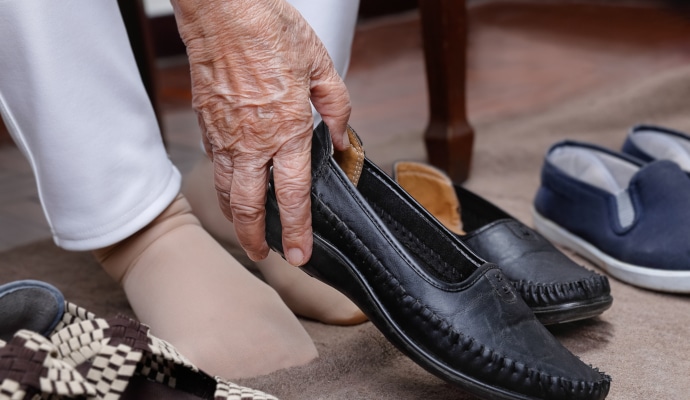
Telemedicine makes monitoring health easier for seniors and caregivers
Helping seniors manage chronic health conditions can mean frequent doctor’s appointments.
For many older adults, going to a doctor’s appointment can be tough. They might have limited mobility or lack reliable transportation.
For caregivers, frequent doctor’s appointments are equally tough. It can be a big challenge to get an older adult with dementia, severe illness, or limited mobility to the doctor’s office.
That’s why telemedicine is so helpful. It significantly reduces the time, cost, and energy needed for regular check-ins with the doctor.
We explain what telemedicine is, where to find it, and 4 ways it improves senior health and quality of life for both seniors and caregivers.
What is telemedicine?
Telemedicine is when people consult with a doctor without being there in person, usually through secure video chat.
It also includes remote patient monitoring. That’s when patients use devices at home to monitor vital signs (like blood glucose or heart ECG). That information is then automatically transmitted to the doctor.
Many health providers and health insurance companies are now offering telemedicine services. Ask your older adult’s doctors if these services are available.
4 ways telemedicine improves health and quality of life for both seniors and caregivers
1. Reduce the time, energy, and cost of in-person doctor appointments
Many older adults see multiple doctors or specialists for ongoing management of multiple chronic health conditions. That means lots of doctor’s appointments.
But going to a doctor’s office so frequently can be challenging for seniors and caregivers for many reasons, including:
- Living far away from the doctor and having to drive for hours.
- Not being able to drive and having a tough time arranging reliable, affordable transportation.
- Needing to frequently take time away from work, putting the caregiver’s job or earning potential at risk.
- Having a really tough time leaving the house due to dementia, advanced illness, or frailty.
If your older adult’s doctors offer telemedicine services, using online visits gets the job done and saves time, energy, and money. For example, regular check-ins to monitor chronic conditions are often just as effective when done via video chat.
2. Save money from reduced healthcare costs
Telemedicine could even save money. Using remote monitoring devices and online video consultations could lower the cost of ongoing treatment and office visits.
3. Better monitoring for improved health
More frequent check-ins or the ability to collect more health data (like blood pressure, heart ECG, or blood glucose) gives doctors more information about your older adult’s health conditions.
This helps doctors know if the current treatment is working well or if changes are needed. It also gives you more chances to ask questions and better understand your older adult’s health condition and treatment.
All of this improves your older adult’s health, which is good for both of you.
Research also shows that using telemedicine has many positive effects. This includes faster recovery, fewer trips back to the hospital after recently being discharged, and more people taking medicine as prescribed.
4. Get a doctor’s opinion when you need it most
Some health providers also offer telemedicine consultations 24 hours a day, 7 days a week.
If it’s Saturday evening or the middle of the night and your older adult is having severe symptoms or something is happening that really worries you, the regular doctor’s office won’t be available to help.
Being able to talk to a doctor immediately is a reassuring and valuable service – especially when you don’t know if you should call 911 or drive them to the emergency room. In some cases, you might be able to handle the situation at home with some instructions from a doctor and not need to spend hours in the ER.
Recommended for you:
- House Call Doctor Visits Make Life Easier for Seniors and Caregivers
- 4 Expert Tips for Managing Multiple Chronic Health Conditions in Seniors
- 7 Tips for Helping Seniors at the Doctor: Being a Health Advocate
By DailyCaring Editorial Team
Image: BusinessWire
About the Author

Connie is the founder of DailyCaring.com and was a hands-on caregiver for her grandmother for 20 years. (Grandma made it to 101 years old!) She knows how challenging, overwhelming, and all-consuming caring for an older adult can be. She also understands the importance of support, especially in the form of practical solutions, valuable resources, and self-care tips.












